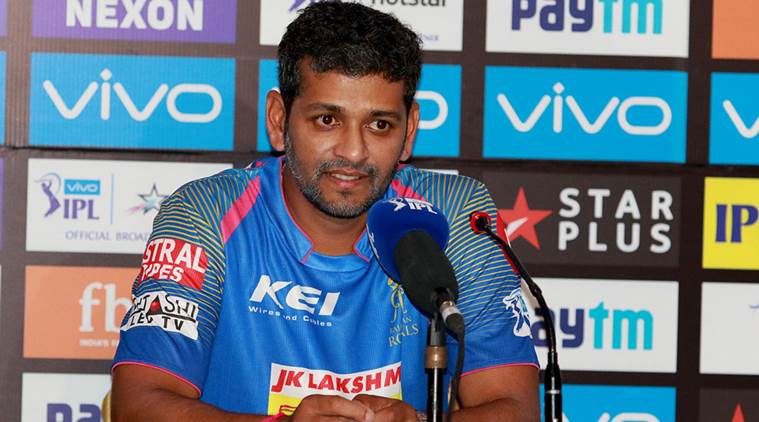Stay updated with the latest sports news across Cricket, Football, Chess, and more. Catch all the action with real-time live cricket score updates and in-depth coverage of ongoing matches.
What is it like to play Test cricket under lights? A Ranji champion explains the challenges
22 years before India readies to host its first day-and-night Test, and two decades before the idea was implemented in Test cricket, the 1996-97 Ranji Trophy final — between Mumbai and Delhi — was played under lights, albeit with a white ball. Amol Muzumdar, who scored 144 in the final, dusts up happy memories of the game.
 Amol Muzumder. (File Photo)
Amol Muzumder. (File Photo)
Defeating Madhya Pradesh in the semifinal in Indore, we reached the final of the Ranji Trophy in 1996-97. When we came back to Mumbai, we were told that the final, against a strong Delhi side in Gwalior, would be a day-night affair. This was the Indian Cricket Board’s experiment to draw more crowd into the stands. But nobody had a clue about it until then and we were genuinely surprised.
Back in those days, unlike it’s now, only Challenger Trophy games used to be held under floodlights. So we were not used to it, even in limited-over games, forget first-class games. Fortunately, we had seven-eight days’ gap between games, so got a bit of practice under the lights. I remember it was the first time the Mumbai Ranji team had a training session under lights at the Wankhede. If getting used to playing under the lights was one challenge, playing with the white Kookkubura ball was another. The entire year we had played with the SG and now in the final, in the most important game, we were playing with the Kookaburra. And Kookaburra, dekhne ko kahan milta tha humko us time pe?
But it turned out to be one of the best Ranji Trophy games I had played. A solid crowd, around 25,000, turned up for the match, which started at 2.30 pm. The ball was changed every 40th over, which meant the fast bowlers too came back for another spell. Usually, it’s the spinners who would be seen operating during this time. But we enjoyed it—match zabardast hua.
READ | Watching the grass grow at Eden
The biggest challenge was to adjust your body clock–a player can play day-night match only for one day, how can you play day-night match every day? So I started working on it way before—in the eight days I got I changed my sleeping pattern, began sleeping late and waking up late. We used to come back to the room by 12.30 am and sleep by around 1 am. Getting up at the right time was another challenge. We used to wake up by 6.30 am. I changed it to 9.30 am, which ensured that I got proper sleep. It’s a simple approach people adopt when they’re coming from abroad and jet-lagged. It meant I remained fresh throughout the day (and the night).
A different challenge surfaced when I started batting in the middle. I couldn’t sight the ball. One session I batted in sunlight and in the next, I batted in lights. So that adjustment was massive. It’s where my preparation came in handy. I had day-afternoon-night sessions in the build-up.
It’s so different these days, most of the Indian players are used to day-night cricket. Some have pink-ball experience in Duleep Trophy as well. The only thing they need to look at it is continuity. The difference is 50-over games get over in one day and subconsciously we relate to day-night cricket as a shorter format. The players will have to tell them mentally that nahi, kal bhi hai game, parson bhi hai game. Sometimes when you play day-night cricket then we know that it will get over in one day. It’s all about getting used to it. So they have to make that adjustment, mentally.
This is Eden Gardens: With heroes and history
Back to the final, Mumbai had just four supporters in the stand and two of them were my father and brother-in-law. I told them: “Aajao, main hundred marega.” And I did score a hundred (144 in Mumbai’s massive first-innings total of 630). We then went on to win the Cup (on a 71-run first-innings lead). We then took a train to Delhi, keeping the Cup on the upper berth of an AC coach.
The next year the board reverted to the traditional day games, but the only day-night Ranji game was a memorable one for me.
(Amol Muzumdar is a former Mumbai skipper, multiple Ranji Trophy champion and the second-highest run-getter in the tournament history. As told to Devendra Pandey.)
Photos
































